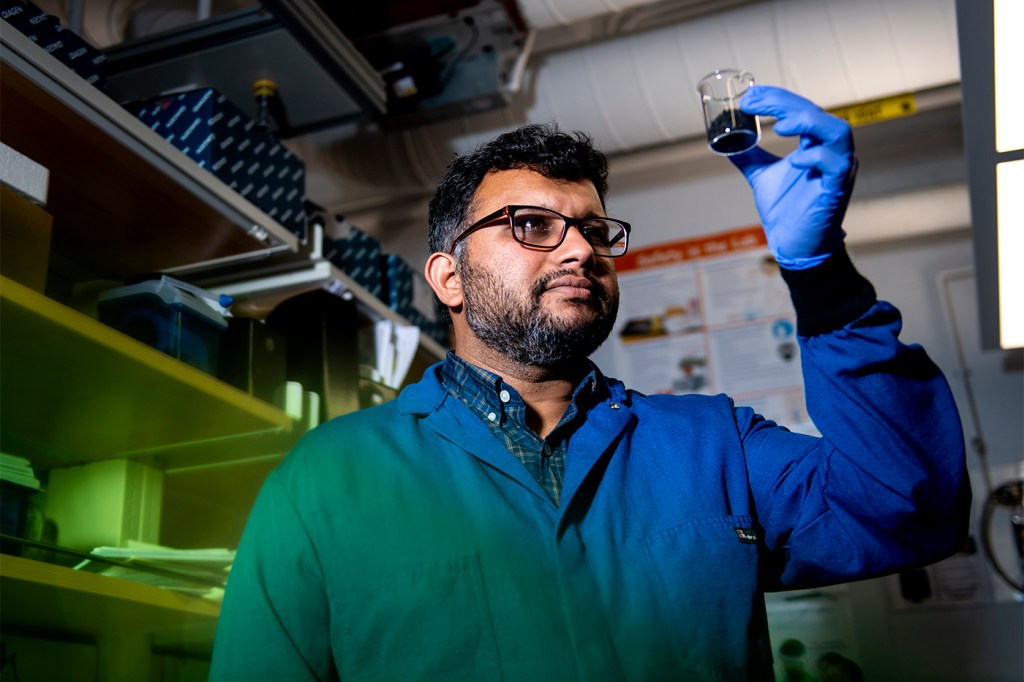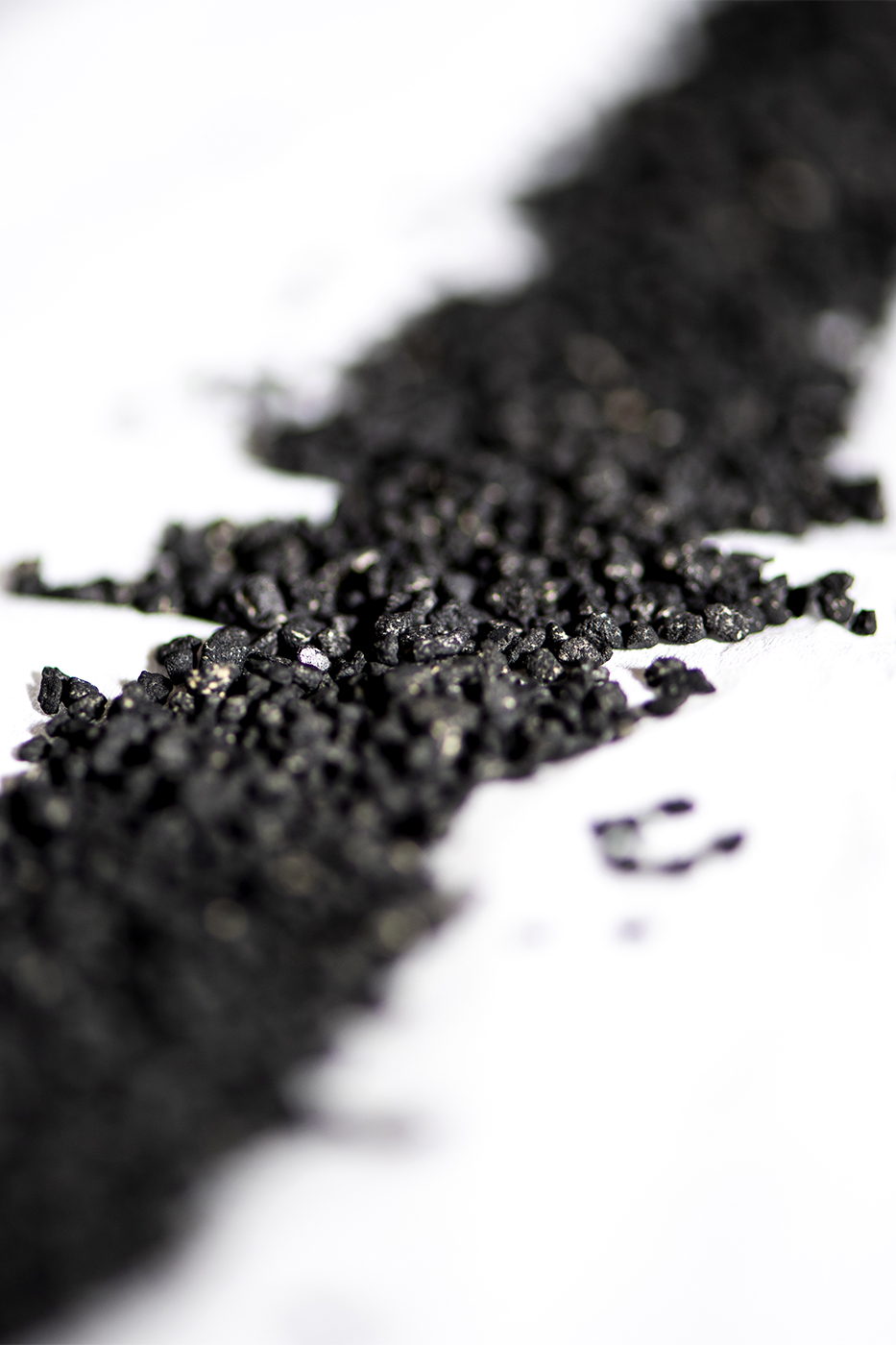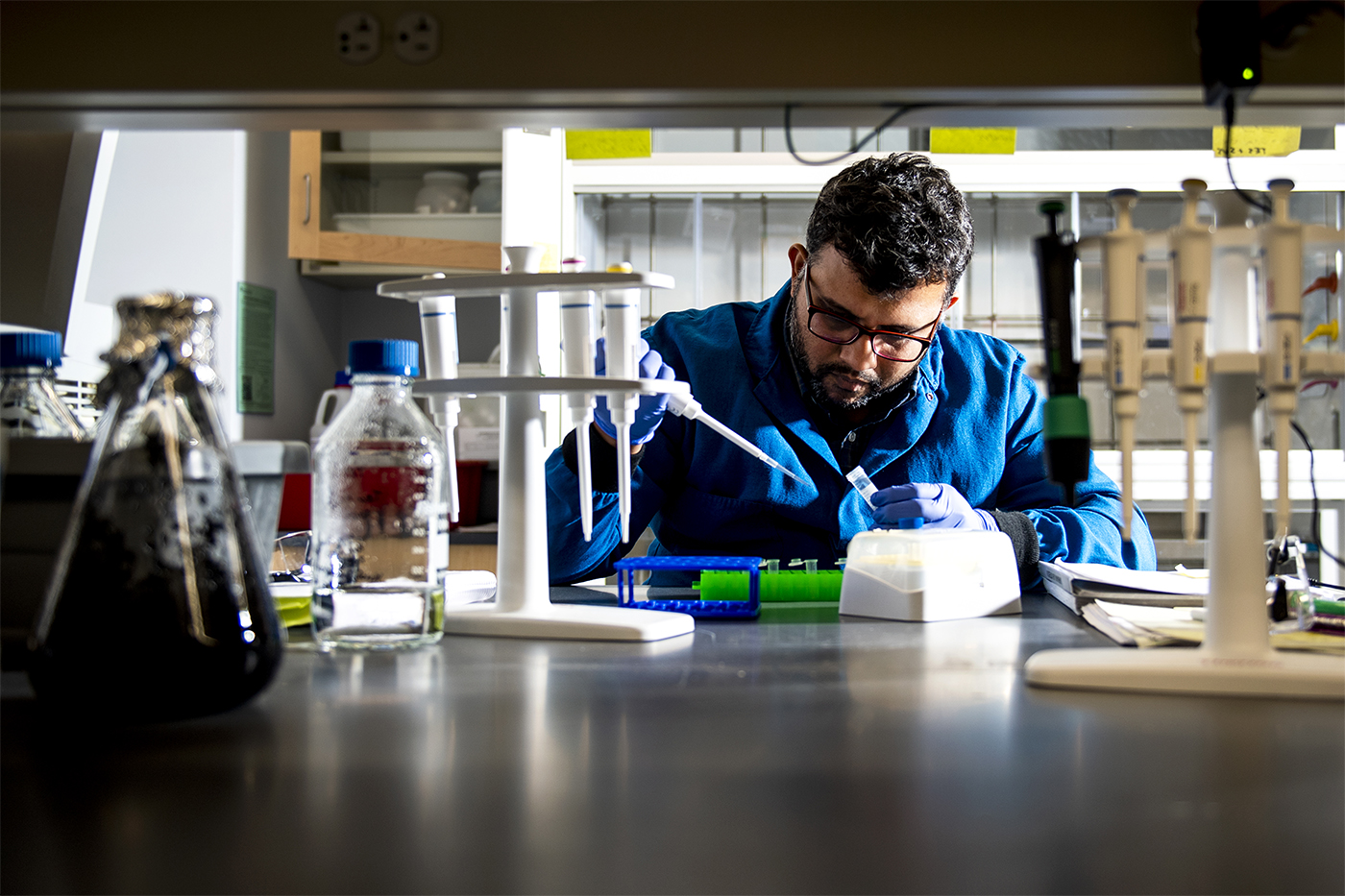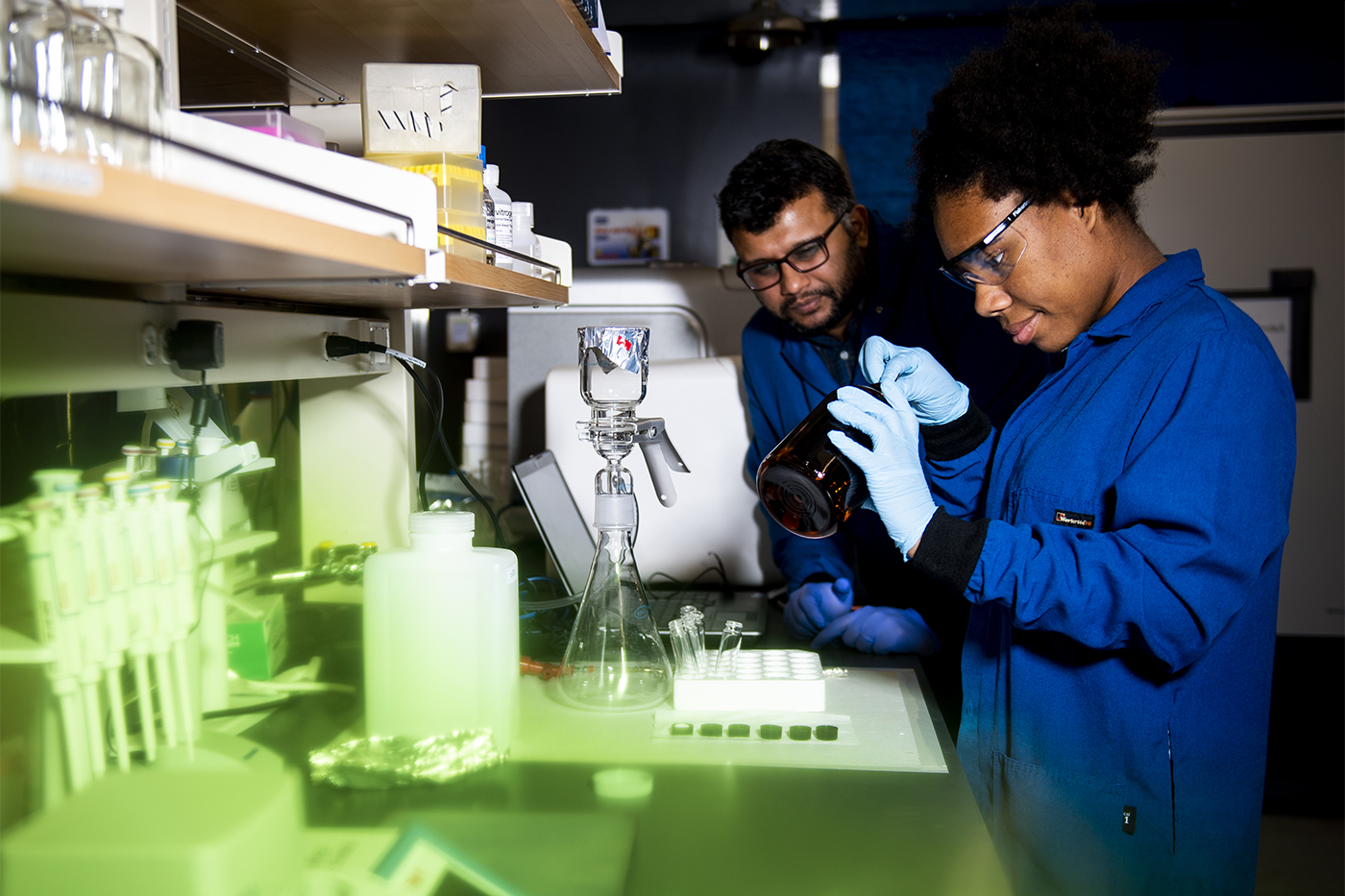Northeastern professor Ameet Pinto wins Paul L. Busch award to make bacteria monitoring easier and cheaper in engineered water systems

With every glass of crystal clear tap water, it’s perfectly normal to consume thousands of microorganisms.
“If drinking water doesn’t have bacteria in it, there’s something wrong,” says Ameet Pinto, a Northeastern assistant professor of civil and environmental engineering.
So when it comes to filtering water, the question isn’t whether bacteria is present, but rather how much and what kind. Right now, deciphering the type and amount of bacteria in filtered water is extremely expensive and complex.
To simplify that process, Pinto’s lab is developing a low-cost microscope and easy-to-follow procedures that will help regulate how water quality is monitored. One of those procedures involves sequencing the DNA of microbes in a water source.



The lab uses a portable DNA sequencer that can be used on-site to test what kind of bacteria is in the water with immediate results. This is an upgrade to the current system, which usually involves bringing samples back to a lab to test them, a process that can take days and doesn’t always represent the full microbial ecosystem of the water.
That sequencing technology is already widely used, but “the way we collect that sample, extract that DNA, and treat it before putting it onto the sequencer can be wildly different,” Pinto says.
To standardize that process, Pinto is defining protocols on how to use the DNA sequencer so that operators at water utility sites can monitor bacteria levels themselves.
“Right now these sequencers are really only used in academic or commercial laboratories,” Pinto says.
But the sequencer only solves half the problem. “The DNA shows you who’s there, but it won’t tell you how many of them are there,” he says. “That’s what the microscope is for.”
To quantify the bacteria, Pinto’s lab, which recently received the Water Research Foundation’s Paul L. Busch award of $100,000, is developing a microscope that costs about $250 to make and can be assembled using generic parts that anyone could buy online.
The point is to create a tool that’s easy to use and cheap to produce so that anyone can have access to it, whether that person is operating a water utility site or drinking tap water at home.
“It could be in your house, for example, so that you can decide how long to flush the tap after you’ve been away for a month before deciding when the water is safe to drink,” he says.
“As long as the tap water is clean, as long as the toilets flush, a lot of people don’t care what’s going on to make that happen,” he says. “If more people can engage with their water quality, they will have much more bigger awareness of what goes into bringing them clean water and taking wastewater away.”
Looking ahead, Pinto imagines that this microbial monitoring platform has the potential to extend to other areas of the engineered water system, such as wastewater and resource recovery systems.
“Microorganisms are everywhere,” he says, “They play an important role across the entire water system.”
For media inquiries, please contact media@northeastern.edu.





